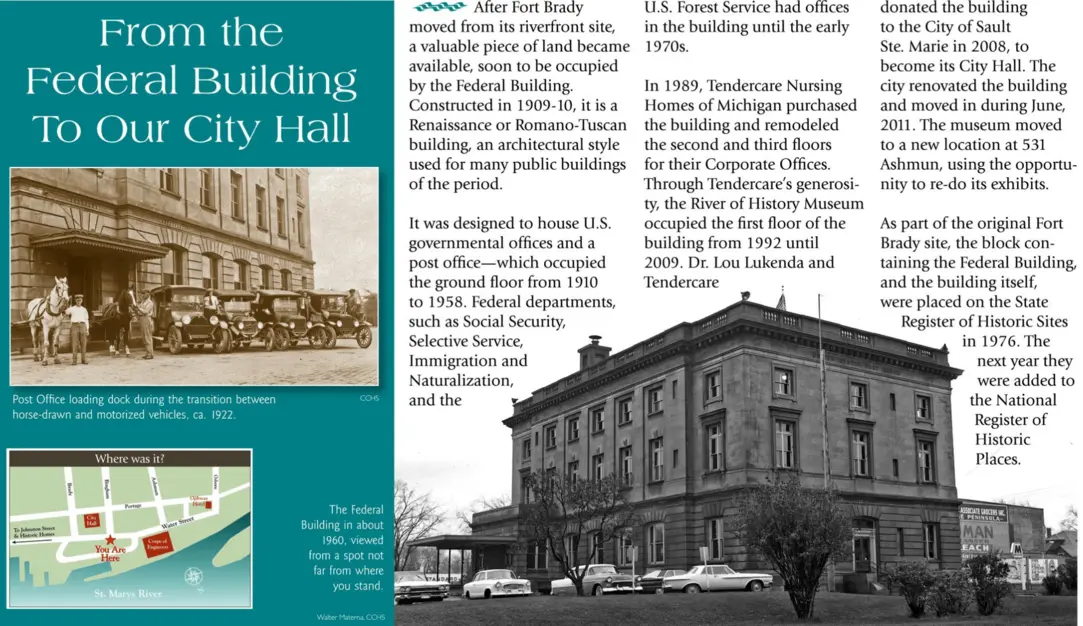Sault Historic Placards

Did you know one of the most historic streets in all of Michigan lies within Sault Ste. Marie? Water Street, located near the Soo Locks, was once the cultural hub of Sault Ste. Marie when the French arrived in 1668. And it has long been the cultural hub of the Native American people that were here long before the arrival of Europeans. Continue reading for more about the placards celebrating the history of Sault Ste. Marie through the eras. Or take the history home with you by downloading the placards here.
The Gathering Place
Fort Brady and America
Take a walk through time

Starting on the eastern end of Water Street and walking westward, the historic placards along Water Street tell a story that’s not just 350 years in the making, but thousands of years. The placards tell stories recounting the earliest encounters between Europeans at the indigenous people who have long called the St. Marys River home.
The Creation of the Soo Locks
The End of an Era
Into the 20th Century

As time, much like a walk along Water Street, marched on, so did Sault Ste. Marie. The historic placards celebrate the Greatest Generation and beyond with a detailed look at the 20th century.





































